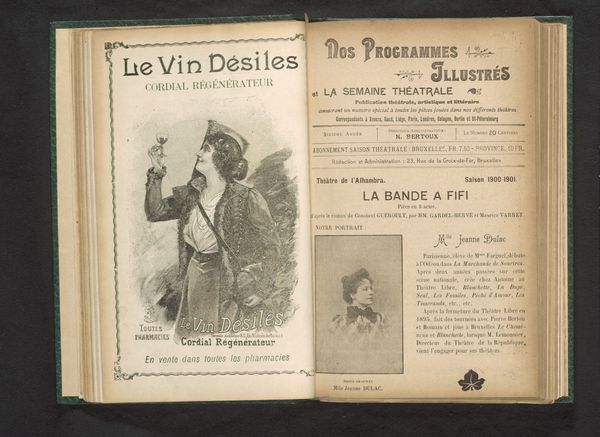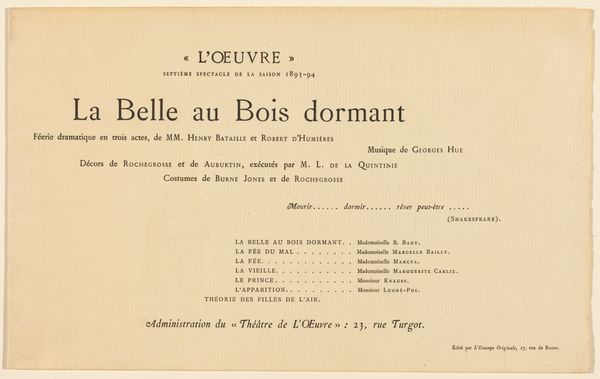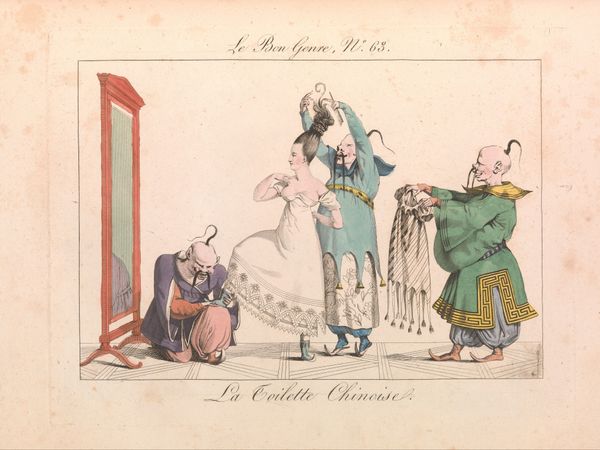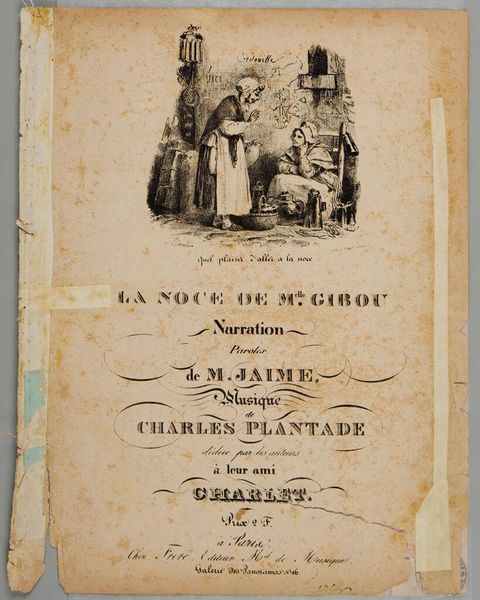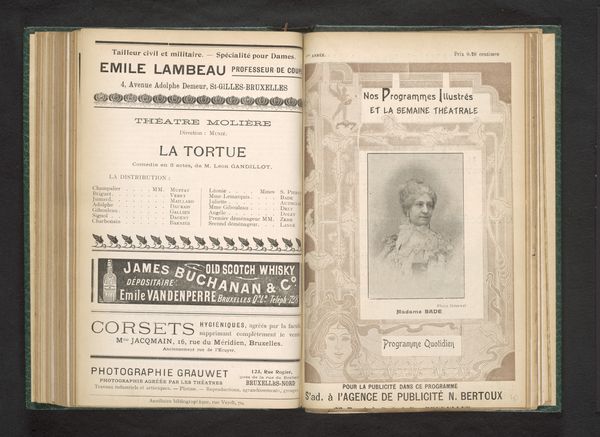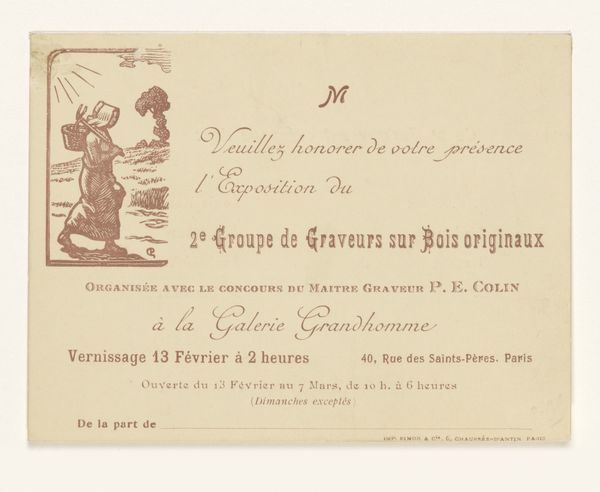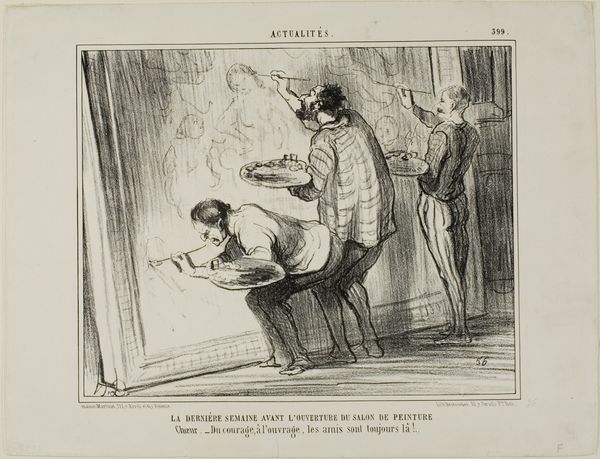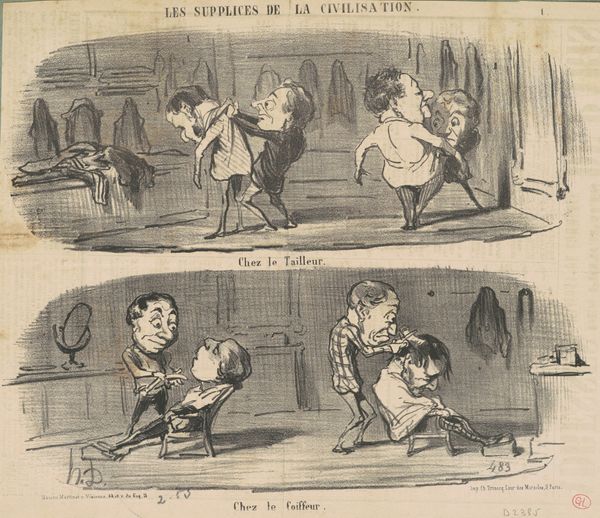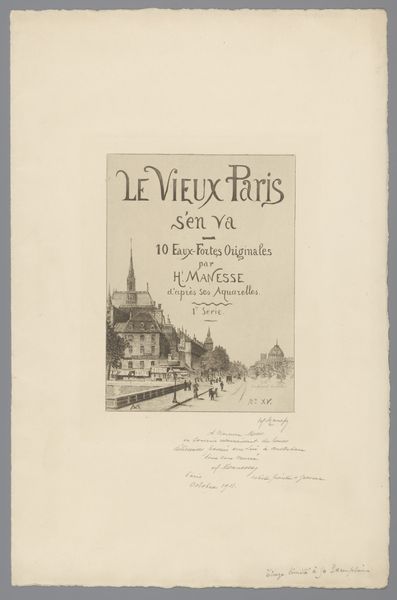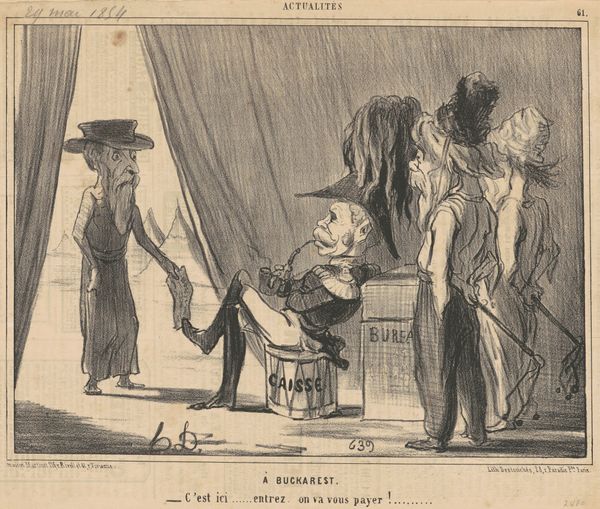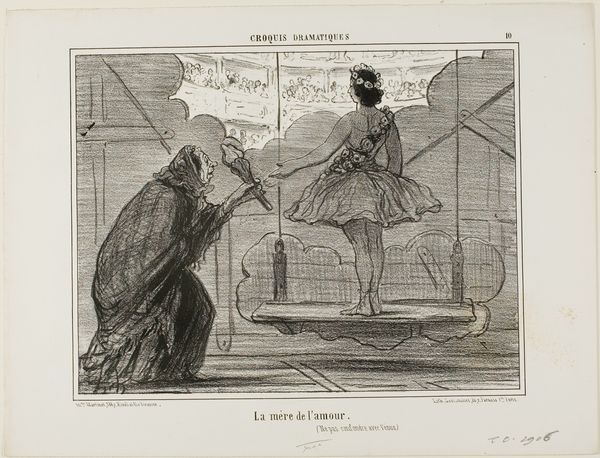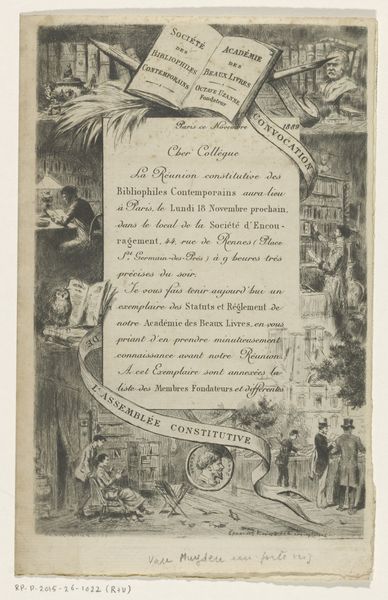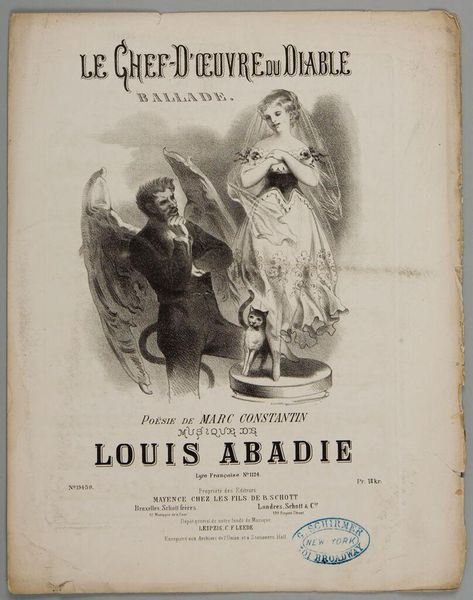
graphic-art, lithograph, print, poster
#
graphic-art
#
aged paper
#
art-nouveau
#
hand-lettering
#
lithograph
# print
#
old engraving style
#
hand drawn type
#
hand lettering
#
personal sketchbook
#
hand-drawn typeface
#
thick font
#
handwritten font
#
poster
#
historical font
Dimensions: height 735 mm, width 106 mm
Copyright: Rijks Museum: Open Domain
Editor: So, here we have Adolphe Léon Willette's 1893 lithograph, "Affiche voor een expositie met werk van Nicholas Toussaint Charlet," an exhibition poster, essentially. I'm struck by the sketched quality of the figures, like a fleeting glimpse of Parisian life, but the lettering feels much more formal. How do you interpret the combination of text and image here? Curator: This piece whispers of a specific cultural memory. Consider the figures—the soldier, the working man—symbols of France itself, but presented with a certain… what would you say, a lightness? Even a touch of satire? Editor: Definitely satirical, there's a playful quality. Curator: Indeed. And note how the Art Nouveau style informs even the lettering. It's not simply informative; it’s expressive. What do you think the contrast between the figures and text achieves? Editor: Maybe it highlights the tension between tradition and modernity that was bubbling up at the time? The figures feel like relics of the past, yet the font looks forward. Curator: Precisely. It invites us to consider how the "modern lithographs" promised in the exhibition title are engaging with, or even rebelling against, those established symbols and histories. The poster isn’t just advertising; it’s participating in a cultural conversation. Editor: That makes me see the whole poster as much more complex, like it's layers of meaning hidden within the promotion of an art exhibition! Curator: Absolutely. Willette's poster reflects how art constantly negotiates our cultural heritage and projects us forward. Editor: It's amazing to consider how much can be conveyed within a simple poster. Thank you.
Comments
No comments
Be the first to comment and join the conversation on the ultimate creative platform.
